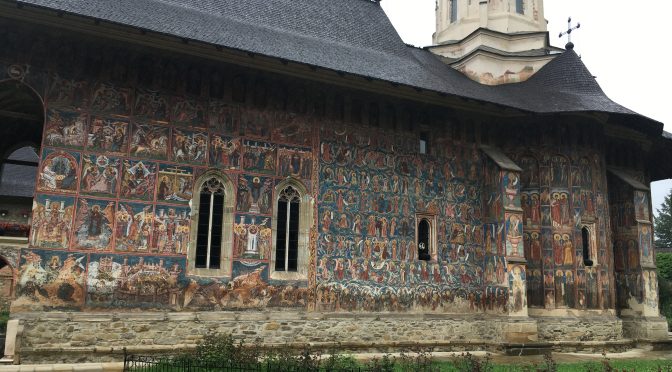Author: admin
-

Romanian Churches
Romania is divided into three main provinces/regions: Transylvania (central and north), Moldavia (northeast), and Wallachia (south). The Carpathian Mountains form a sort of L shaped range in the middle of the country; hence, we ended up crossing them several times. They are quite beautiful, as mountains tend to be (more on one spectacular drive later).…
-

Off to Romania: First Stop, Brasov
I flew into Bucharest and had lunch in the airport while I waited for Jean to arrive. At that point we found our guide, Gigi, who is from Bucovina (north near the Ukrainian border). We hightailed it out of Bucharest toward Brasov, which is in the Transylvania region, across the Carpathians (one part of them, anyway).…
-

Interlude: Reunions in Budapest & Vienna
After leaving Szeged, I spent another couple of days in Budapest, again in Attila’s Airbnb flat on Raday. It was a busy couple days catching up with old (and new) friends. Tuesday I had lunch at a Thai place (okay curry) with Tracey, one of the CEU fellows, whom I met at the workshop. Talked…
-

Sunday in Szeged
Sunday seems to be family day in Szeged (not so different than in many parts of the US, in fact). Walk along the river, hang out at Dugonics Ter, even go for a beer at Malata, and you see families. The children delight in the fountain, of course, and run around it like little maniacs.…
-
Adventures in Hungarian Life
I’ve found that it’s always the banal, everyday things that get most complicated in a place where you do not know the language. While here in 2015, I wrote of my post office adventures (December 2015); I can still hear that accusatory cry of “toll, toll.” This week I had to deal with my new…
-
Getting Reacquainted
This has been a week to get reacquainted with Szeged. I’ve been spending time with friends like Réka and Robi, Agi, Daniel, Zoltan, Thomas, Emma. I have also been revisiting favorite spots around town, such as the lovely Dugonics square, the market at Mars square (it’s strawberry season!), the Water Tower and Szent Isztvan Square,…
-
I’m Baack!
So here I am back in Szeged after 15 months, give or take. It feels strange but oh so familiar, and each day we move more into familiar! I arrived in Budapest Thursday after a gruesome flight (nothing out of the ordinary, just the typical packed like sardines coach experience–seriously thinking I should at least…
-
Hungarian Art Nouveau: Kecskemét & Subotica
This continues my “too big for one post” discussion of what we might call the Hungarian Art Nouveau Belt. The region from Szeged and Kecskemét to Subotica (formerly part of Hungary, now in Serbia) is well known for having some of the best examples of Secessionist architecture. I visited Kecskemét on my last day in…
-
A Love Letter to Szeged
(Note: this post has been a long time in the writing, as I’ve started it and come back to it. I began it in March and it is now May. But I’ve left my original opener anyway!) Sitting on my father’s patio in Phoenix, Arizona, enjoying the warm weather, I feel very removed from Szeged,…
-
Reflections, part 2: “Uncomfortable, but not paralyzed”
So, I just submitted my Fulbright final report. I thought you might like to see my reflections on what the experience has meant for me, on a personal and professional level. If you do, read on. My Fulbright experience has already transformed my personal and professional life, and I expect it to continue to do…